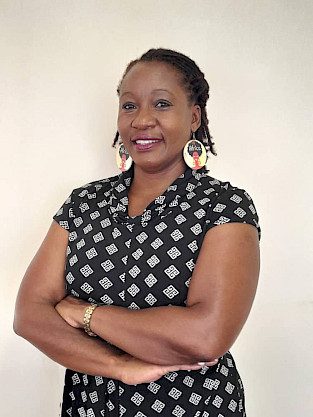Program Advisory Panel: Ensuring community needs are at the heart of HIV response
Interview with Mildred Mushunje, Co-Chair of the RCF Program Advisory Panel.

Could you explain how the Program Advisory Panel (PAP) works and what makes it so unique?
Mildred: The Program Advisory Panel (PAP) is an integral part of the Robert Carr Fund’s governance structure. As a PAP member, my role is to contribute to the development of the Request for Proposals — what it should look like, our expectations, and then to be part of the pre-selection and final selection of grantees for submission to the RCF International Steering Committee. This is my second round with the PAP, and I’ve been fortunate to see the process unfold.
The work of Program Advisory Panel is one of the most acclaimed funding models because it’s participatory. It takes problem sense from civil society experts and allows us to influence the kinds of organizations that are funded.
Read more about RCF Governance structure.
I really like the participatory way of developing the entire funding process because we, as a team of experts, have an understanding of the challenges organizations face. We try to address those challenges in the structure of the call for proposals, so even organizations that wouldn’t normally be funded can be supported by working with stronger organizations as their fiscal hosts.
What distinguishes RCF’s funding model from others?
Mildred: RCF is progressive because it’s not patriarchal. It’s not top-down where the donor comes in and says, ‘These are my indicators, and this is what I want you to deliver.’ It is a true participatory co-creation. We all come with different expertise and experiences, and I find that very refreshing.
Both PAP and ISC members work together to foster engagement and understanding between donors and grantees, particularly around the complexities of community needs. I see a shift in how donors are working. They’re becoming more engaging and trying to understand the different intersectionalities in communities, which are unique depending on the community, region, or population.
RCF supports institutional capacity-building and core funding, which is so unique. In other meetings, I’ve heard people say they’re exhausted, reporting to so many donors who aren’t prepared to pay for their time, salaries, or overheads. But with the RCF, it’s different. It’s refreshing and flexible while still maintaining accountability.
Can you tell us more about your role in the PAP?
Mildred: I’ve been part of the development of the applications selection process, helping to shape the entire framework for funding. My role involves making sure we remain mindful of the challenges organizations face, particularly those that are less established. We also constantly discuss gap areas and underfunded regions, which our funding can help address.
RCF funds community-led networks, why do you think networks are important in HIV response?
Mildred: The networks are critical. By addressing HIV through a networked approach, we create a movement. This allows us to reach even the last mile — those who are hardest to reach.
Moreover, it is important to invest in innovations in the HIV response, especially in engaging younger populations. What we used to do 20 years ago has changed. The young people we’re talking about today, and the key populations, have changed. They are technology-based, more on social media. That’s how we can reach them.
How do you see RCF influencing both global and local HIV responses?
Mildred: I think the model the RCF has put forward is one that many donors can learn from. As we move forward, I believe that engaging with other donors through this model helps get to the last mile. It addresses the key fundamentals of the HIV/AIDS response.
I am convinced that RCF’s funding model can influence HIV responses globally. But we need to refresh the political will. Donors and governments need to be more engaged, putting sufficient resources toward the response. At the same time, we need to hold national governments accountable to ensure they prioritize HIV/AIDS on their agendas.
At the same time, at the local level, communities must take the lead. We’re talking a lot about community-led interventions, and communities know best how HIV is affecting them. They should be at the forefront of designing the interventions that we come up with.
Given the current political landscape, what needs to be done to keep HIV and human rights on the global agenda?
Mildred: The HIV pandemic has changed, and we need to refresh the response. It’s not business as usual. What worked 20 years ago isn’t enough today. Young people are more tech-savvy and social media-focused, and we need to innovate to reach them.
I see we have become too comfortable. People think that because we’ve reached certain treatment targets like U=U (Undetectable = Untransmittable), the fight is over. But the truth is, we can’t be complacent. Twenty years ago, people were dying because treatment wasn’t accessible. Now it is, but that doesn’t mean we can relax. We need to keep HIV on both national and global agendas and reach out to inadequately served populations.
What can communities do to help in this fight?
Mildred: Communities must be at the forefront. They know how HIV is affecting them, and they need to be leading the design of interventions. Communities have the power to shape what the new architecture of HIV response will look like. As long as communities remain at the center of the response, we can continue to make progress and ensure that no one is left behind.